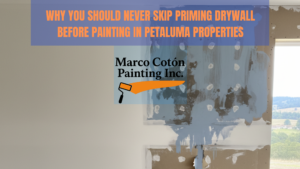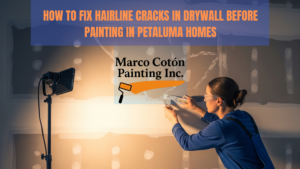When it comes to home improvement, few upgrades offer the instant visual impact of a fresh coat of exterior paint. But keeping that beautiful finish looking vibrant for years doesn’t happen by accident. Whether you’re painting wood, stucco, brick, or siding, proper preparation and maintenance are the keys to extending the life of your exterior paint job.
Here’s how to make sure your home’s exterior paint looks sharp and stays protected season after season.
1. Start with a Clean Surface
Paint adheres best to a clean, dry surface. If dirt, mildew, or chalky residue is left behind, the paint may not stick well, and it could peel or blister prematurely.
Best practices before painting:
- Use a pressure washer to remove dirt, cobwebs, and grime
- Scrub mildew with a mixture of water and mild detergent or bleach
- Allow surfaces to fully dry before priming or painting
A clean foundation ensures proper bonding and longevity of the new paint.
2. Repair and Prep All Surfaces
Before you open that first can of paint, take time to inspect and repair the exterior. Cracks, holes, rotted wood, or peeling paint must be addressed first.
Prepping tips:
- Sand rough patches or peeling areas smooth
- Fill gaps and cracks with quality caulk
- Replace or repair rotting trim or siding
- Prime any bare wood, patched areas, or stains with an exterior-grade primer
A properly prepped surface is critical for paint durability.
3. Choose High-Quality Exterior Paint
Not all paint is created equal. Investing in premium exterior paint pays off in protection, appearance, and longevity.
Look for paints that offer:
- UV resistance to prevent fading
- Mildew-resistant formulas
- Flexibility to expand and contract with temperature changes
- Warranty of 10+ years
While cheaper paint might save you money upfront, you’ll likely need to repaint much sooner.
4. Paint During the Right Weather Conditions
Exterior painting isn’t just about the temperature; it’s also about timing. Poor weather conditions can ruin a paint job before it dries.
Ideal painting weather:
- Temperatures between 50°F and 85°F
- Dry weather for at least 24–48 hours after application
- Overcast or shaded conditions (avoid direct sunlight when painting)
Avoid painting during humid, rainy, or windy days to prevent streaking, bubbling, and poor adhesion.
5. Apply the Right Number of Coats
Applying one coat of paint might seem like a shortcut, but it won’t offer the protection or durability your home needs.
Experts recommend:
- Using a primer first (unless your paint is self-priming)
- Applying two coats of exterior paint for the best coverage and longevity
- Letting each coat fully dry before applying the next
This added effort will significantly extend the time between repaints.
6. Maintain and Clean Your Exterior Annually
After painting, proper maintenance is the secret to long-term results. Annual cleaning and inspections can add years to your paint job’s life.
Simple maintenance tips:
- Rinse siding with a garden hose or soft wash system
- Clean mildew or algae with a diluted vinegar or bleach solution
- Touch up small chips or cracks before they grow
- Trim back vegetation to prevent moisture buildup or paint damage
Think of it like an annual check-up for your home’s curb appeal.
7. Protect Vulnerable Areas from the Elements
Certain spots are more exposed to water, sun, and wear. These areas often require more attention or stronger protection.
Focus extra care on:
- South- and west-facing walls (sun exposure)
- Trim, windowsills, and fascia boards
- Around gutters, downspouts, and rooflines
- Wooden decks and railings
Use extra primer or sealants in these areas to reinforce the paint layer.
8. Avoid Harsh Chemicals and Power Washing After Painting
Power washing or using strong cleaners can strip or damage exterior paint if not done carefully.
To preserve your paint:
- Use low-pressure water for regular cleaning
- Avoid abrasive scrubbing tools or harsh detergents
- Stick to soft-bristle brushes and mild soap when needed
A gentle clean is all you need to keep the exterior fresh without compromising paint adhesion.
9. Keep Up with Landscaping Maintenance
Believe it or not, landscaping has a huge impact on your paint’s lifespan. Shrubs, vines, and trees brushing against the house can cause scratching, moisture retention, and accelerated fading.
Tips:
- Keep plants trimmed 12–18 inches from the home
- Avoid letting vines grow directly on painted walls
- Clean debris from gutters to prevent overflow onto siding
Small changes in yard care can prevent big paint problems.
10. Plan for Touch-Ups Every Few Years
Even the best exterior paint job will eventually need minor touch-ups. Staying ahead of small issues prevents the need for major repainting too soon.
What to check:
- Fading or discoloration
- Cracks and splits in caulk
- Peeling or bubbling areas
- Mold or water damage
Catching issues early ensures your paint job looks great for as long as possible.
Final Thoughts
A high-quality exterior paint job is more than just a cosmetic upgrade; it’s a protective shield for your home. With proper prep, smart timing, and consistent maintenance, you can extend the life of your exterior paint by several years, saving time, money, and effort in the long run.
Whether you’re a DIY homeowner or hiring pros, these steps are your roadmap to a longer-lasting, more beautiful home exterior.







